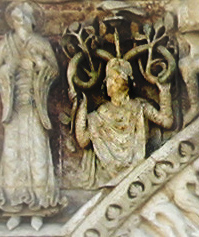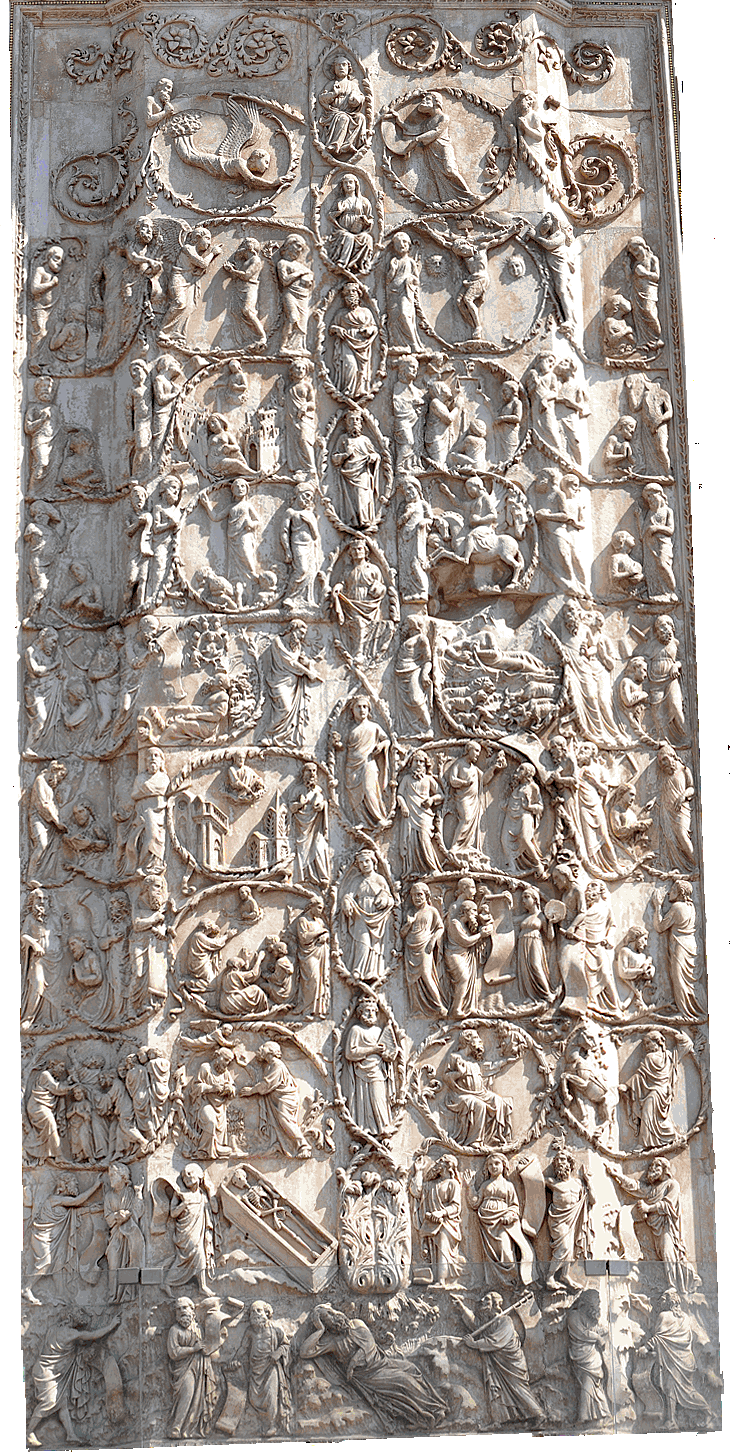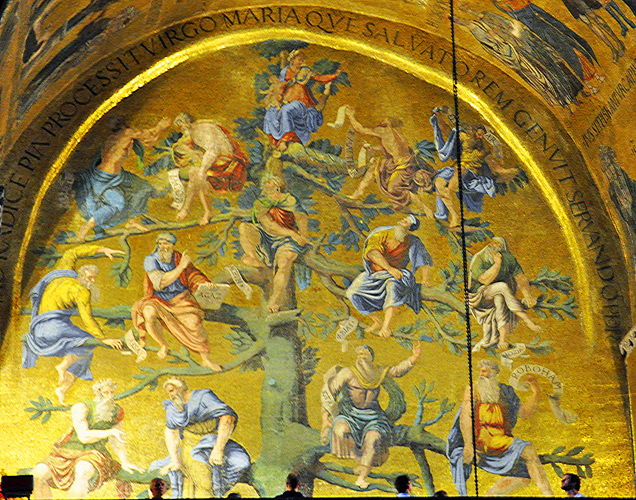And there shall come forth a rod [virga] out of the root of Jesse, and a flower shall rise up out of his root.
In that day the root of Jesse, who standeth for an ensign of the people, him the Gentiles shall beseech, and his sepulchre shall be glorious.
In Romans 15:8-12, Paul assumes that Jesus is this "root of Jesse" to which the Gentiles now look with hope:
[T]he Gentiles are to glorify God for his mercy, as…Isaias saith: "There shall be a root of Jesse; and he that shall rise up to rule the Gentiles, in him the Gentiles shall hope."
The virga of the Latin can mean both "stem" and "rod." The metaphor is further elaborated in the early 3rd century in Tertullian's remarks on Luke 1:42, "blessed is the fruit of thy womb":
[Jesus] is the blossom of the stem which sprouts from the root of Jesse.…[M]oreover, the root of Jesse is the family of David, and the stem of the root is Mary descended from David.…1
In Jesse trees, Christ and Mary will be at the top, either in the form of a Madonna and Child portrait (as above) or sequentially, with Christ above Mary (as at right). Sometimes the figure of Christ is attended by seven doves representing the "gifts of the Holy Spirit" enumerated in Isaiah 11:2. Jesse will be at the bottom, often in a recumbent position. In-between, the tree's "branches" usually hold portraits of some of the men listed in the genealogy of Matthew 1:6-16, as in the picture above, or in some cases the prophets who foretold the coming of Christ, as at right.
In some cases the entire "stem" or "rod" rising from Jesse is the Virgin Mary, attended by those same gifts of the Holy Spirit.2 As the Speculum Humanae Salvationis explains, "This rod signifies Mary who is made fruitful by a heavenly dew and produces for us Christ, the most beautiful flower."3
 Jesse can also be portrayed solo, with a tree as his attribute, as in the west portal at Notre-Dame la Grande, Poitiers.
Jesse can also be portrayed solo, with a tree as his attribute, as in the west portal at Notre-Dame la Grande, Poitiers.
Prepared in 2014 by Richard Stracke, Emeritus Professor of English, Augusta University. Revised 2016-12-13, 2020-03-07, 2020-08-09.
The detail from Notre-Dame la Grande is taken from this page at Wikimedia Commons.
HOME PAGE
BELOW: The Jesse Tree on the west façade of Orvieto Cathedral:
 (See the description page.)
(See the description page.)
MORE IMAGES
- 1290-1300: An unusual Jesse tree which sets King David and four New Testament scenes above the recumbent Jesse.
- Undated medieval: The Jesse Tree Window at Canterbury Cathedral.
NOTES
1 On the Flesh of Christ, XXI, 5.
2 Schiller, I, 17 and fig. 24.
3 Labriola and Smeltz, 24. The identification of the rod (Latin virga) with the Virgin (Latin virgo) is a commonplace in patristic and medieval exegesis, e.g. pseudo-Ildephonse in Migne, Pat. Lat., XCVI 264-65, and Glossa Ordinaria, IV, 138-39.
